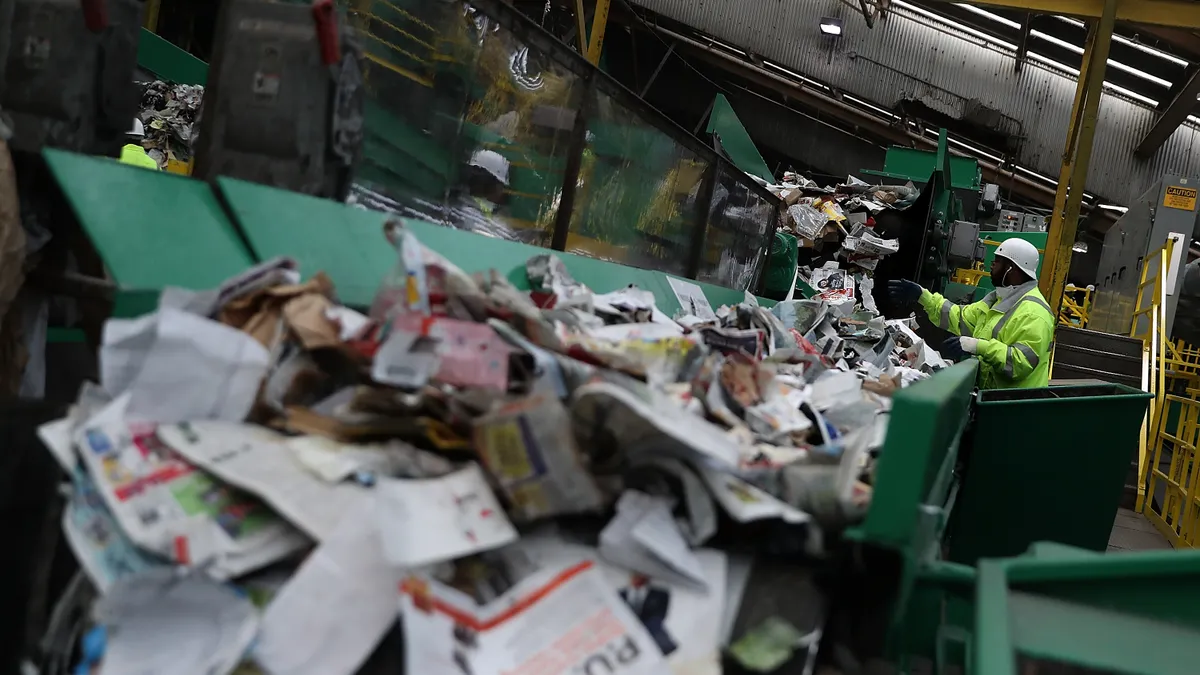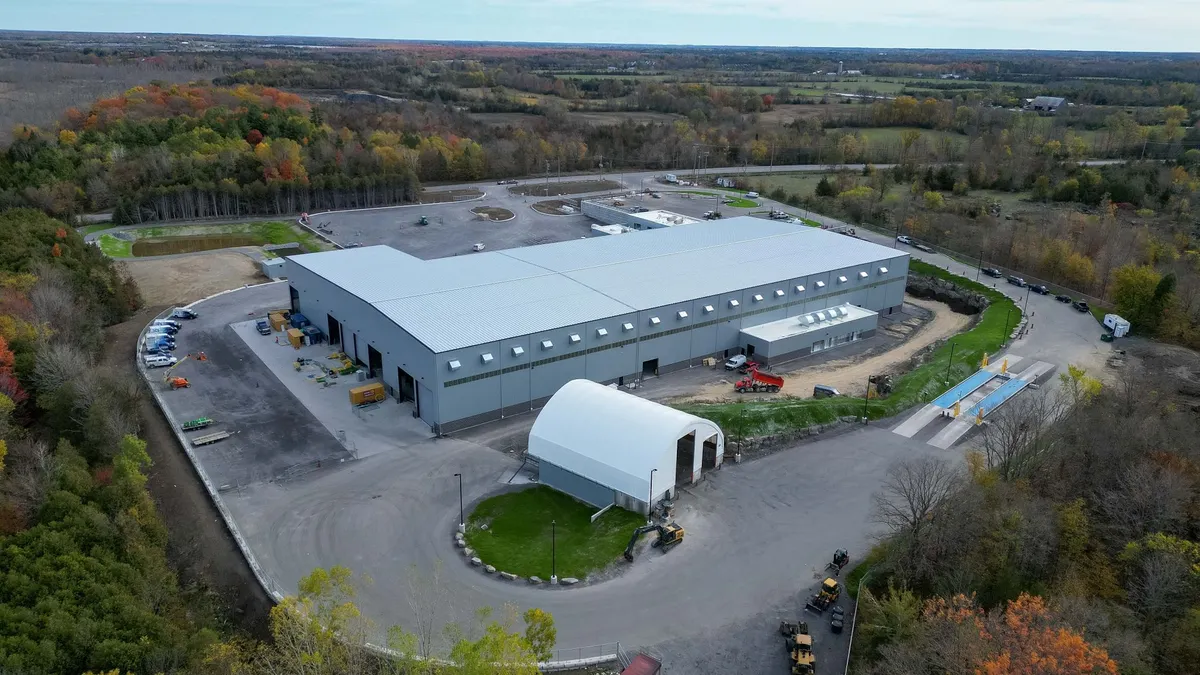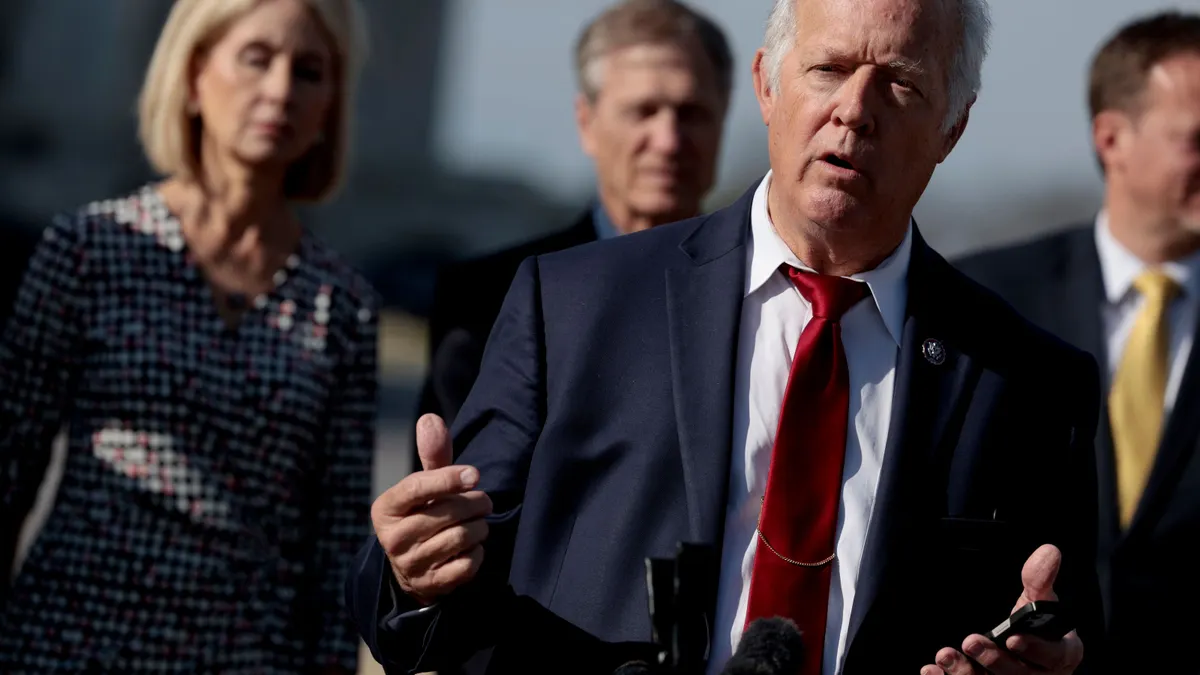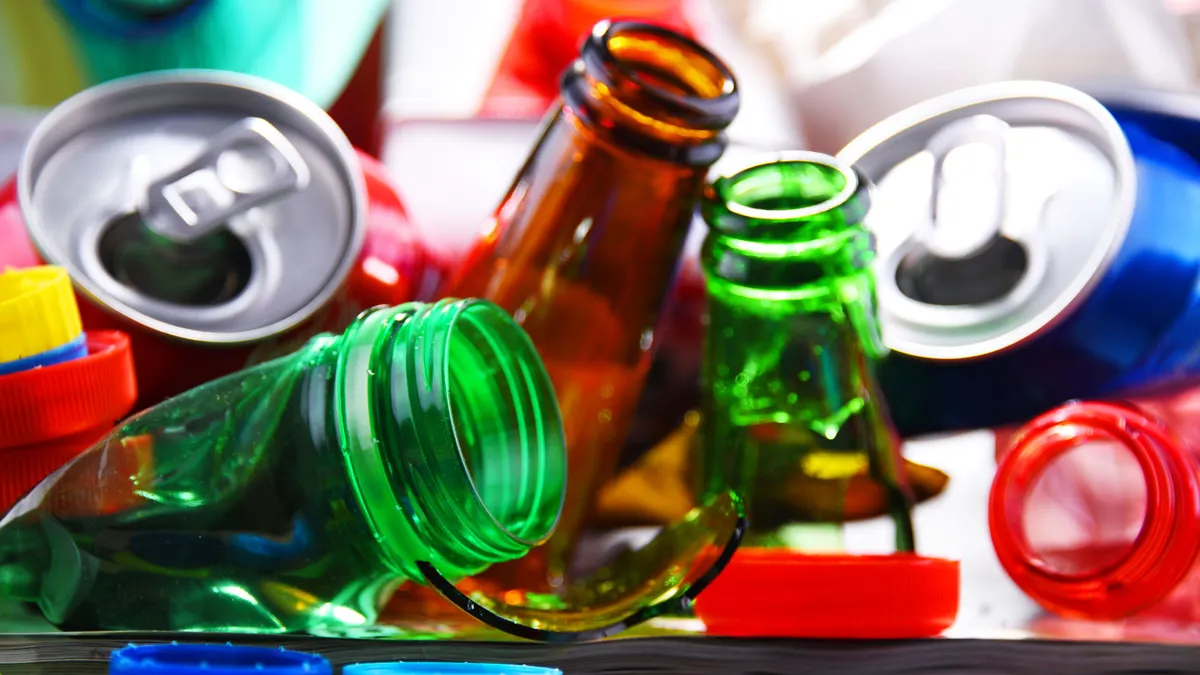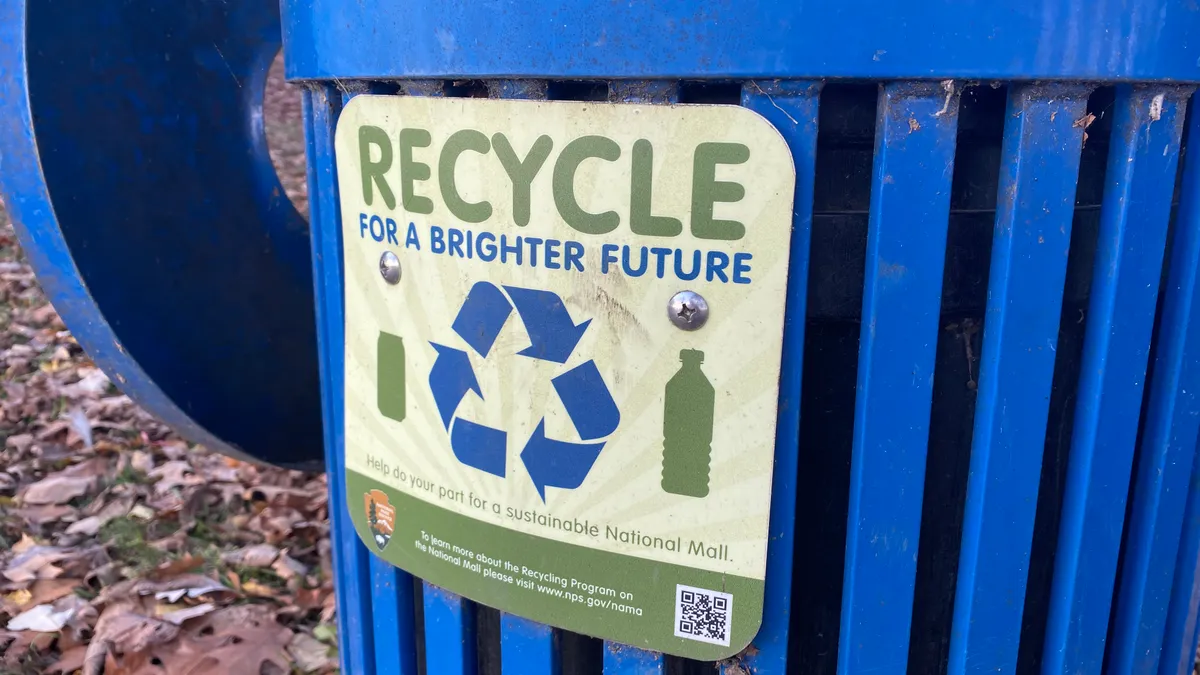Jennie Romer has been ubiquitous in many pivotal moments of modern plastics policy.
From helping to craft San Francisco's landmark plastic bag ban ordinance, to moving to New York City to help pass a similar local policy, to helping introduce the Break Free From Plastic Pollution Act's original sponsors, Romer has been a key player throughout. As the founder of PlasticBagLaws.org, she's become an expert on plastics policy fights and participated in the development of numerous other laws over the years. Since joining the Surfrider Foundation in 2019, Romer has continued that work, helping to track more than 1,000 plastic reduction laws around the country.
Romer recently released a new book, "Can I Recycle This?", that highlights these experiences and answers questions for the average reader about recycling more than 60 common items. The book uses watercolor illustrations by Christie Young to show examples of different packaging types and bring levity to more complex details on recycling infrastructure or policy. Romer also makes a case in the book for policies such as extended producer responsibility (EPR), in an expansion of her focus beyond the world of bags, straws, polystyrene foam and other commonly targeted plastics.
"I've spent more than a decade as a lawyer fighting for effective plastic pollution laws – now I'm ready to fix the whole recycling system," Romer writes.
Waste Dive recently spoke with Romer about her advice for communicating about recycling, what's next for packaging policy, how to scale up reuse systems and more.
This conversation has been edited for length and clarity.
WASTE DIVE: Every year around Earth Day or America Recycles Day we see stories about how "recycling doesn't work," but the more detailed realities never seem to really break through. What do you hope the book can do differently to change the conversation?
JENNIE ROMER: I hope the book contributes to the issues with recycling being more of an evergreen conversation. I specifically chose to do an illustrated book to be super approachable, but also to get into details in a way that we could lure in people that really just want to sort their recycling. I didn't want to have the book focus on a zero waste crowd, or people that are already interested in the subject, but to reach a really wide audience and engage them in details that they might not otherwise be privy to. The goal is to start a larger conversation and hopefully have policymakers eventually read the book as well, to have policies that reflect what's actually happening on the ground at recycling facilities.
I appreciated that it was accessible but also frank with people about the more technical parts of the system. In the average guidelines from your local government or hauler, we don't always see that kind of detail. Why do you think it's important to lay out for people the details of how this all works?
ROMER: That's the thing that was really hard to do in the book, finding the balance of getting across the right amount of information, where people would be engaged but not be overwhelmed. I think as far as local jurisdictions and municipal recycling facilities communicating, having that added level of detail available is really helpful.
I think people are interested in what are the cool, innovative machinery things that are happening, and then how can they not cause problems. With COVID, we've seen people trying to recycle a lot of their PPE, like their masks and gloves and things, and I highlight in the book that whatever you're putting in your bin someone's probably going to have to touch at some point. Also with lithium-ion batteries, that's definitely something you shouldn't recycle [curbside] because it's going to cause problems at recycling facilities, including explosions and fires. Most people have absolutely no idea what happens next after they put their stuff in the bin.
What else do you feel may still be missing when it comes to communication strategies?
ROMER: I think one thing that's been happening lately is a push to only accept the plastics or materials that have a market. I talk in the book about the different philosophies that various jurisdictions have, as far as whether they want to accept all rigid plastic so that they'll get more volume, or whether they want to just accept things that have a market, like HDPE and PET bottles and jugs. So I think with that, there's potential for more transparency. But I also hear pushback from people saying, "Well, my jurisdiction isn't doing enough because they're not accepting this." It's really a broader topic as far as needing to have the packaging and products made out of materials that are truly recyclable in the first place.
But I think it's an ongoing communications issue. It's something we're hearing a lot more about now, particularly with local municipal recycling facilities being faced with having to pay for the landfill or incineration of so much of the material that they used to have a market for, after China closed its doors. In New York state, we're seeing those facilities are the ones that are really going to the legislature and asking for EPR laws. So I think that they have more motivation for effective communications than they have had before.
Rising recycling costs seem to be a big factor around more policy interest. What other factors do you see behind why policy momentum has ramped up so much in recent years?
ROMER: I started out in this field in law school back in San Francisco, when the first bag law passed in 2007. At that time, regulating single-use plastic was such a new idea. When I was volunteering at the Board of Supervisors office, I saw a presentation by the plastics industry that said it was trying to fundraise to spend $700,000 on fighting local plastics laws. And that was before San Francisco's law was even introduced officially. So I saw that and thought, "this is something that the plastics industry thinks is a really big deal, even if people don't really think that yet."
So that inspired me to work on plastic bag laws, and I founded my website, PlasticBagLaws.org, 10 years ago to have a source of free information. We've come a really long way since then. Now I'm an attorney at Surfrider, and I see that those initial plastic bag ban laws and foam bans really were a gateway to talking more widely about single-use plastics, talking about recycling in a different way. Now we're moving beyond those single items – like bags, foam and straws and another little bit of foodware – to really talking about how to regulate all the other plastic that we see on store shelves.
We have almost 1,000 laws in the U.S. now. So I think people have become so much more comfortable with regulating single-use plastic only because we started on this 10 or 15 years ago with just bags. Now we're able to talk in a real way about these other policies, like recycled content mandates and EPR, and then the Break Free From Plastic Pollution Act, which really looks at plastic more comprehensively, all the way from production to disposal.
As the priority shifts more toward focusing on broader policies like EPR, is there also a whole new groundwork that needs to be laid? Or do you see a clear way for momentum to carry over from product-ban efforts?
ROMER: I think it's a different kind of push. Because I think the product bans were talking about one tangible item at a time that people can see and focus on, versus the push that's happening right now — in a lot of states and in the Break Free From Plastic Pollution Act — is extended producer responsibility, shifting the cost of recycling, waste disposal and cleanup to the manufacturers. That's something that is a little bit more wonky, a little bit more difficult to communicate to the average person.
It's the most important policy that we'll be talking about for quite a while, and something that really needs to happen. But I think that having the groundwork set, and having so many organizations and people that came together working on those single-use plastic, individual-item policies, we really have more of a network now, including the Break Free From Plastic network, to push for EPR laws.
Communicating to the public is something that we need to work on. EPR isn't the term that rolls off the tongue. But I think talking about the policies more generally, talking about why it makes sense, is important.
Right now, producers, manufacturers aren't responsible for what happens to their packaging after it leaves their hands. If those producers are responsible for the costs for making recycling happen, and for source reduction, then that's the only way we're really going to see it happen in a major way. Otherwise, there's no incentives to stop using a lot of the nonrecyclable, low-value plastics that the manufacturers are using right now.
I would also like to see, within the EPR laws, a lot more emphasis on reduction and reuse. So not just improving recycling and getting that infrastructure in place, but also incentivizing getting that infrastructure in place for real, wide-scale refill and reuse systems. In the book, I highlight the Oregon bottle bill pilot project for reusable, refillable beer bottles. That's something that makes a lot of sense, to refill glass beer bottle bottles rather than having them go through the whole recycling system. So if we can incentivize manufacturers to create more of those systems on a larger scale through policy, I think that's another place we really need to be going.
In the book you lay out a potential future, 10-plus years from now, where reuse is happening on a much wider scale. Do you think policy forces the system to make that happen, or will it also still require a big cultural change?
ROMER: I think that reuse and refill needs to be easier. I don't want to be the outlier who goes out of my way to shop with bulk bins and reuse glass jars and all that. It shouldn't be that it's difficult to do, or that it's a very small percentage of people who are doing it. People can actually save money by not buying all this packaging, but it's hard right now. There are very limited options, and a lot of people have brand loyalty. So they want to be able to get the cleaning product that they're used to getting, or the cereal they're used to getting, or the shampoo, and won't want to buy just whatever is available at a co-op – if they even have access to shopping at something like a co-op.
There's some projects happening right now like Algramo, that has a pilot in Brooklyn for laundry detergent and things like that, but we really need to see it on a wider scale. I would like to see refillable and reusable packaging still covered within an EPR system, but maybe a manufacturer will pay less into the system if they can subtract the capital investment that they're laying out on developing a reuse and refill system. I'm not talking about just making a bottle thicker and calling it reusable, but actually having a system in place where you can refill that bottle with something else. So I want to be talking about that alongside talking about recycling. Because recycling is part of the answer, but refill and reuse really should be part of that answer as well.


